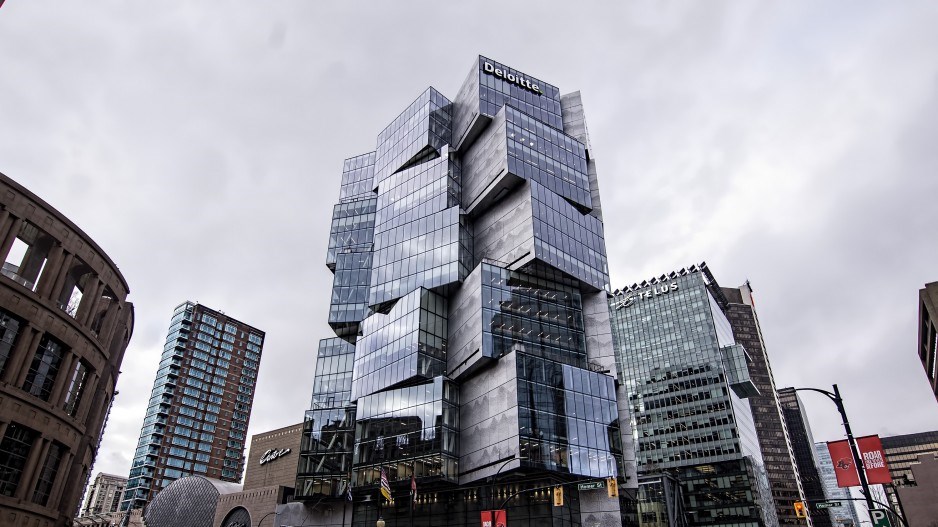The future of office spaces could feel a lot like home as companies and landlords continue to adjust to changing workplace and worker needs.
As office vacancies reach notable highs in Vancouver, and companies look to encourage employees to return to in-person work, amenities and flexible space design are increasingly priorities, according to industry experts.
For Emily Lee, co-founder and managing director of CLVR Studio, the future of workspace centres on the “hotelification” of the office.
“It’s about injecting finishes and design details that really speak to people and entice them to come in. With hotels you feel like it’s a home away from home, so you’re trying to create that feeling in the workplace,” said Lee, who also acts as design principal for CLVR, which specializes in the interior design of multi-family residential and commercial spaces.
Downtown Vancouver’s office vacancy sits at 11 per cent as of the fourth quarter of 2023, up from approximately two per cent just prior to the pandemic, according to data commercial real estate firm CBRE Group Inc.
While Vancouver’s vacancy may seem historically high, it is lower than Canada’s overall downtown vacancy of 19.4 per cent and downtown Toronto at 17.4 per cent.
This rise in vacancy is in part due to Vancouver’s office market adjusting to one of downtown’s largest development cycles in two decades, according to Myah Ollek, a commercial sales associate with CBRE.
Examples of new AAA office inventory include the Deloitte Summit built by Westbank Corp., The Stack built by Oxford Properties, The Post built by QuadReal Property Group, 320 Granville built by Bosa Development and Vancouver Centre II built by GWL Realty Advisors. All of those buildings opened in the last two years.
Flexible design elements and amenity offerings are now becoming a crucial ingredient for landlords who are navigating downtown Vancouver’s “tenants’ market,” according to Ollek.
“Landlords understand that we’re in a changing market. Tenants are demanding change in how they utilize their space and landlords are starting to understand better what that means as an owner and how they can respond to that,” she said.
“We’re seeing them improve their amenity packages and if a building might be a B or C class building due to its age or location, it can compete on the amenity level. That really puts it at the forefront for tenants.”
Deloitte Summit features 18 different types of workspaces, no private offices and moveable furniture and walls, in addition to amenities like a fitness centre.
The Post, occupied by Amazon, also has an open-plan work format with employees assigned to different “neighbourhoods’’ or zones within the building, in addition to having access to meeting rooms, phone booths and “focus rooms,” which offer a private workspace.
“Gone are the days the old, traditional private offices or a sea of workstations,” said Lee. “No one wants to work in that kind of environment. You want some place that’s very inspiring, where you can socialize, collaborate, but also do heads down work. It’s offering that variety of spaces for [employees] to choose what, where and how they want to work.”
Vancouver tech company Hootsuite Inc. has taken on the task to “de-densify” and offer more flexible options throughout their 27,000 square-foot office space in the Mount Pleasant neighbourhood, according to Carol Waldmann, director of global facilities and real estate with Hootsuite.
“We’ve taken a bunch of our desks out … and we put in collaborative spaces, lounge areas and wellness rooms,” said Waldmann.
“We’re trying to play with the work environment to see what we can do that’s different, then we measure the results. Are people using the meeting room that has soft seating in it or not? And then we can continue to be agile.”
Examples of office amenities mentioned during the panel discussion are wellness resources like gyms, yoga studios and steam or sauna rooms. This is in addition to providing food offerings such as restaurants, bars or coffee shops on site and tailoring kitchen space to employee needs.
Design choices discussed include softer lighting, a variety of seating options, providing a sense of place through local artistry, adding plants or natural elements and even playing music in certain areas of the office.
“We’re still figuring out what work looks like post-pandemic, and I don’t think we’re there yet,” said Waldmann.
“Organizations like the Googles and some of these larger tech companies are saying, ‘Well, we want you back in the office,’ and I understand the mandate … but I don’t think mandating is the right way. The way you want to do it is by adding beautiful amenities and making your workspace really cool and interesting.”



